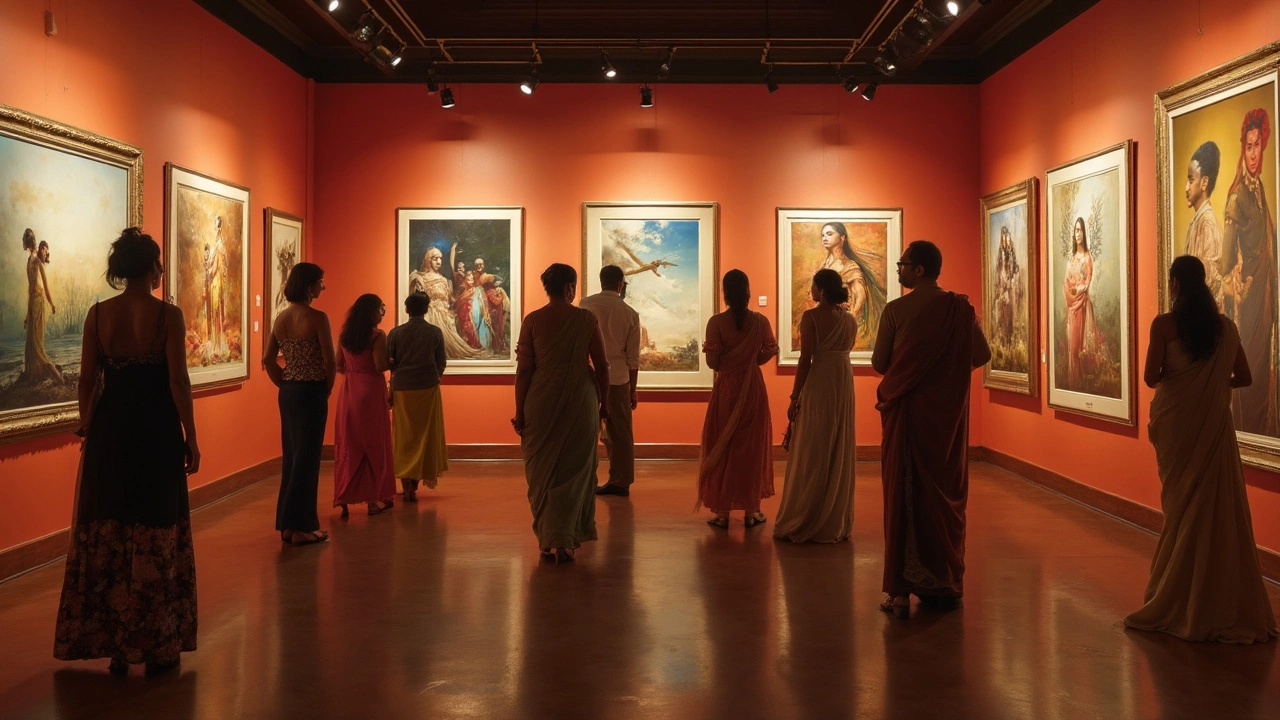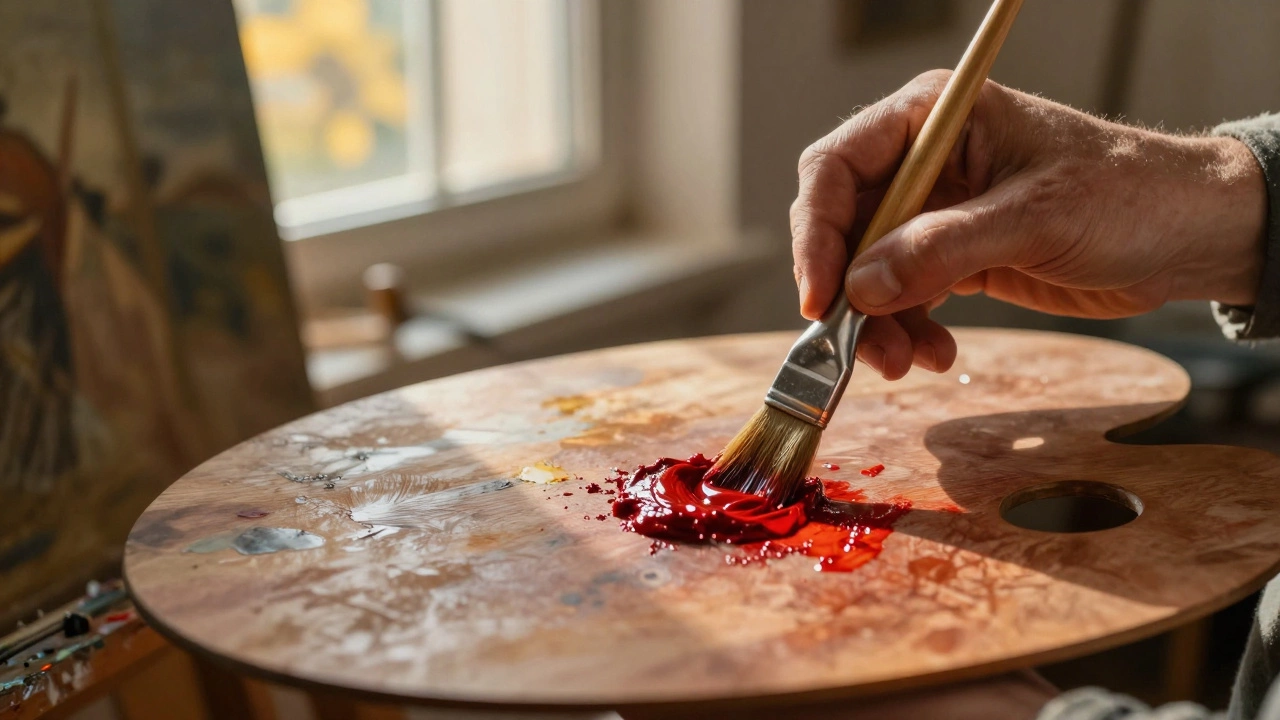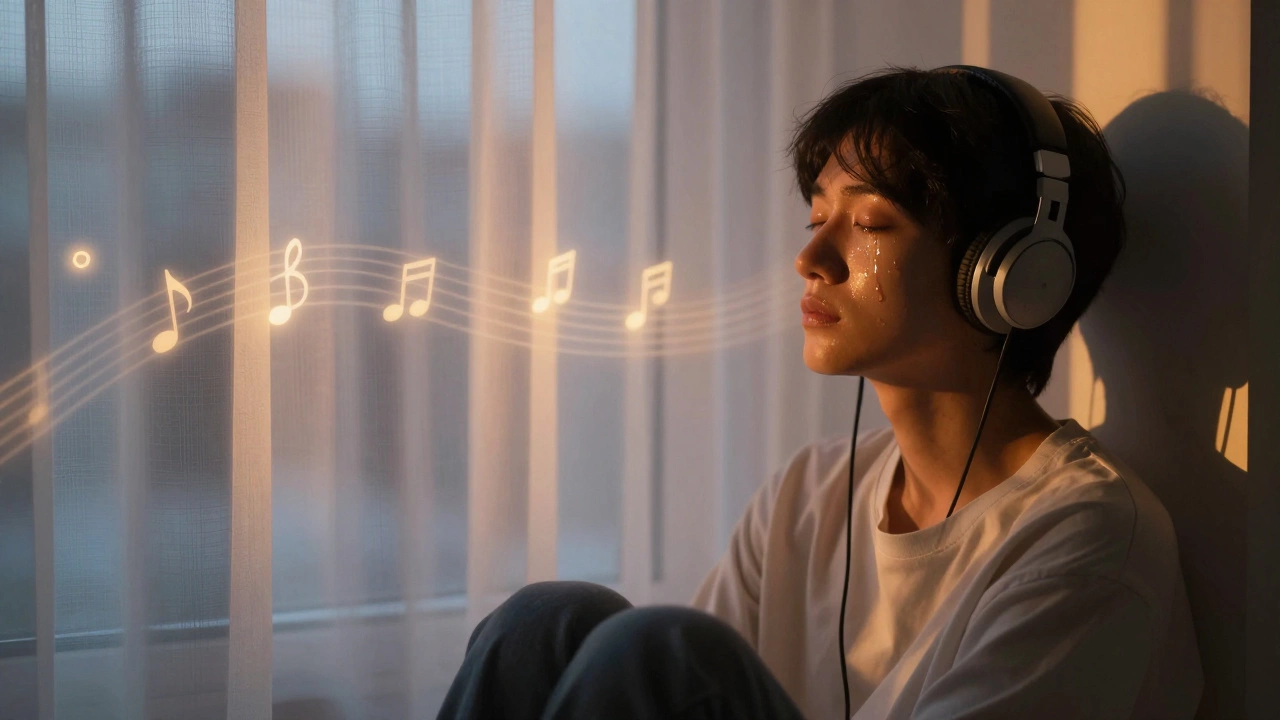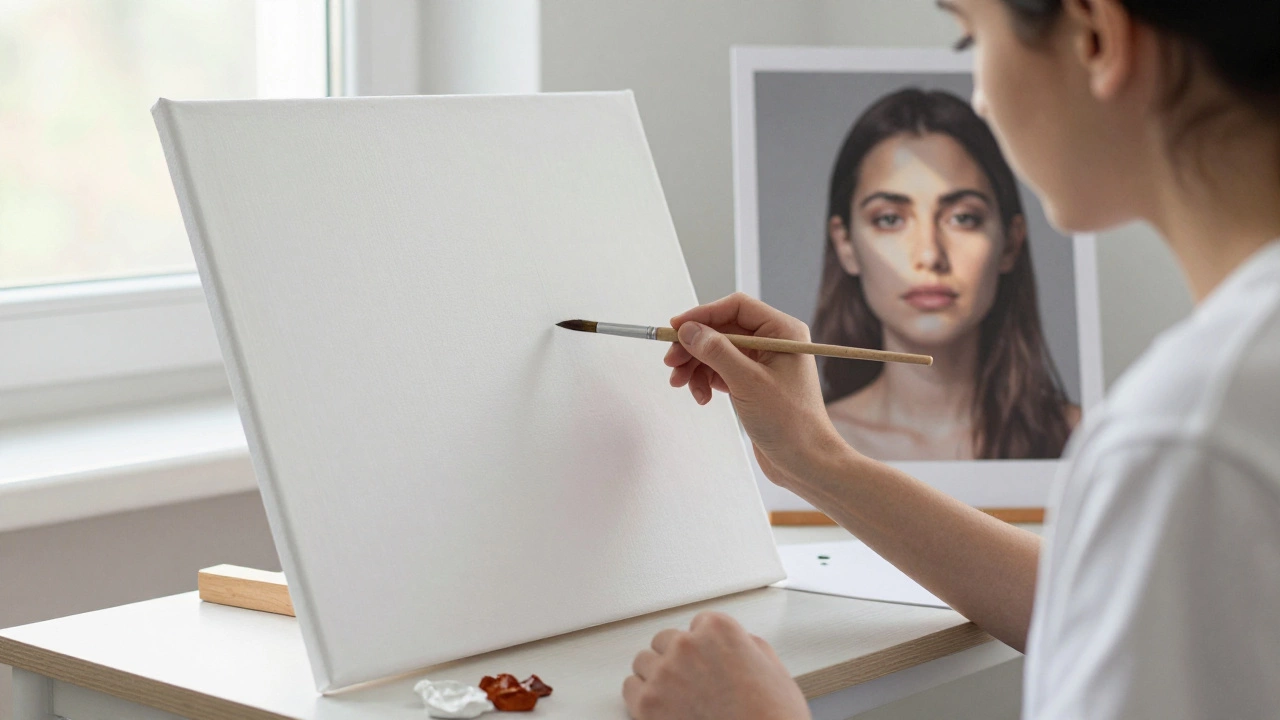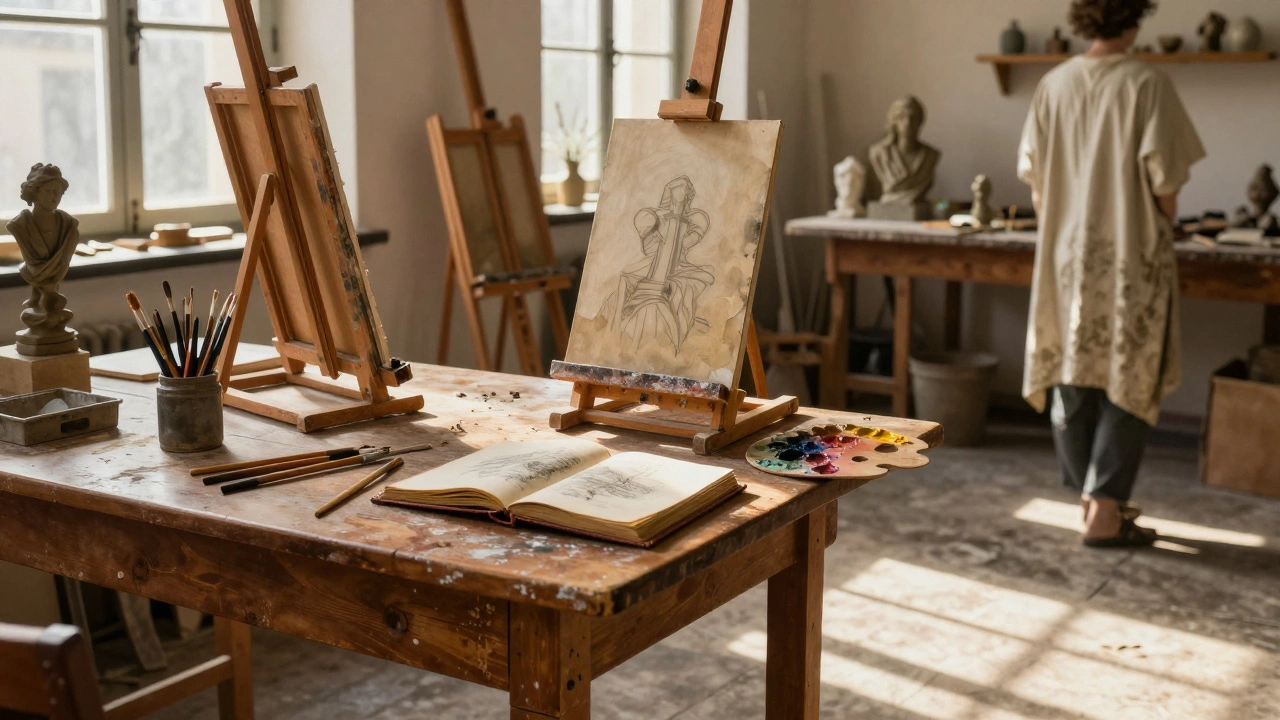Ever heard someone call their photos "art photography" or even "photographic art" and wondered if that’s the same thing as fine art photography? You’re not alone. The truth is, this kind of photography goes by quite a few names. Depending on the gallery, the photographer, or even the country, you might see it labeled as "artistic photography," "creative photography," or "conceptual photography." All of these names point to the same idea: photos made as a form of personal or artistic expression, not just to record what’s in front of the lens.
This isn’t about snapping a quick shot at a party or getting portraits done for grandma. Fine art photography is all about intention—the story or feeling the photographer wants to get across. That’s why you’ll often see people use more than one name to describe it, especially when they want to stand out and show that what they’re doing goes beyond the usual.
- Other Common Names for Fine Art Photography
- Why Do Names Matter in Photography?
- How Fine Art Differs from Other Photography Types
- Key Themes and Approaches Used
- Tips for Spotting (or Creating) Fine Art Photos
- Famous Fine Art Photographers and Their Influence
Other Common Names for Fine Art Photography
If you’ve ever searched for fine art photography online or browsed an art fair, you’ve probably seen it called lots of different things. These names usually pop up depending on what the photographer wants to highlight, or even just what sounds the most appealing to a buyer or gallery. Here’s a rundown of the names you’re most likely to see:
- Art Photography – This one’s simple and direct, showing that the focus is on the creative, artistic side of the medium instead of memory-keeping.
- Photographic Art – Flips the words, but means pretty much the same thing. Often used in gallery settings.
- Creative Photography – Spots where the image goes beyond basic reality, whether through editing or unusual ideas.
- Conceptual Photography – Works where the idea or concept is more important than what you see on the surface.
- Gallery Photography – Less common, but you might see galleries use this term to signal that the works are exhibition-worthy and not just commercial.
There’s some overlap, and some photographers even switch names up depending on the project or audience. The table below lays out how often these names appear in major photo art magazines or gallery listings, based on a simple 2024 keyword count from leading art websites:
| Alternative Name | Frequency (2024 gallery mentions) |
|---|---|
| Art Photography | 82% |
| Photographic Art | 61% |
| Creative Photography | 44% |
| Conceptual Photography | 29% |
| Gallery Photography | 15% |
So if you want to sound like you know your stuff, "art photography" will get you the furthest. But if you’re talking about works that focus more on ideas or experiments, “conceptual photography” is your go-to. Paying attention to these names can help you find what you’re really looking for—whether that’s something to hang on your wall or just some inspiration for your own work.
Why Do Names Matter in Photography?
The name you use for a style of photography isn’t just a label; it shapes how people see your work and even what kind of audience you attract. Call your project "fine art photography" and right away folks will look at it differently than if you just said "portraits" or "landscape shots." The name tells people what to expect—something with a creative focus, maybe even something thought-provoking or unusual.
Galleries, collectors, and even online platforms care a lot about what something is called. For example, photos entered as "artistic photography" often end up in totally different categories at competitions than ones labeled “documentary” or “commercial.” This isn’t just branding—it can decide whether your work gets shown in an art gallery or passed over for not fitting the
How Fine Art Differs from Other Photography Types
The biggest thing that separates fine art photography from other genres is the goal behind the photo. Regular photography—like what you see in news, family albums, sports, or events—usually aims to document a moment or show something as it really is. Fine art photographers, on the other hand, work more like painters: they use the camera as a tool to show off a personal idea, vision, or emotion.
For example, take commercial and documentary photography. Commercial stuff is focused on selling products or people (think ads, fashion shoots), and documentary photography is about capturing real life just as it happens, with little or no editing. With fine art, the photographer chooses every detail intentionally, from lighting to posing to editing, to create a specific mood or idea—even if that means the final piece looks nothing like the real scene.
Here’s a quick look at how these different photography types stack up:
| Photography Type | Main Purpose | Level of Artistic Expression | Editing Level |
|---|---|---|---|
| Fine Art | Express a concept or emotion | Very high | Can be extensive |
| Documentary | Record reality, report news | Low (objectivity is key) | Minimal |
| Commercial | Sell a product or service | Medium to high | Often moderate to high |
| Portrait | Capture a person’s likeness | Medium | Moderate |
| Snapshot | Save a personal memory | Low | Minimal |
Another big difference? In fine art photography, the photographer often plans everything out in advance, sometimes even sketching ideas or building sets. The editing can go way beyond simple adjustments—fine art shooters might blend images, use heavy retouching, or add digital effects to get their vision across. Traditional photography leans more toward getting things right in-camera, and doesn’t usually take editing this far.
So, if you see a photo and you can tell there’s a message, or it feels more like a painting or a dream than a record of real life, you’re likely looking at fine art. Next time you scroll through Instagram or visit a gallery, try spotting these differences—it’s actually pretty fun once you know what to look for.
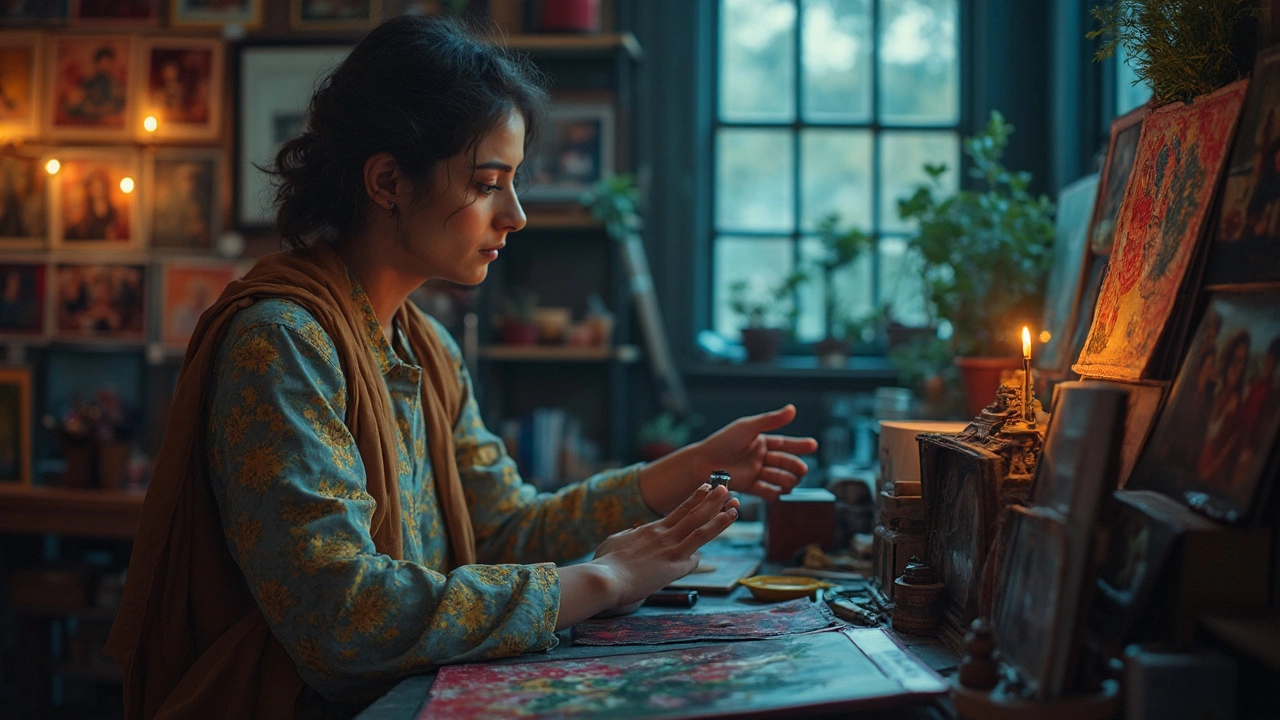
Key Themes and Approaches Used
When someone dives into fine art photography, the themes usually go way beyond what you see in traditional snapshots. This isn’t just about capturing how something looks—it’s about sharing an idea, telling a story, or showing a feeling. So, you’ll spot some big themes popping up over and over. These include identity, everyday life, environmental issues, surreal dreamscapes, and the play of light and shadow. Photographers pick these themes because they want you to see the world a little differently, or even spark a bigger conversation.
Let’s break down some hands-on approaches photographers lean on for fine art work:
- Staging Scenes: Artists often set up their shots like a movie scene. Nothing is random. Think Cindy Sherman’s famous self-portraits where she becomes different characters.
- Post-Processing: Digital editing is a key player. Manipulating color, contrast, and even swapping in new backgrounds lets artists push their creative message.
- Experimental Techniques: Double exposures, long-exposure shots, and using unusual lenses or materials all help create a unique vibe—like the soft, misty look in some black-and-white pieces.
- Personal Symbols: Many fine art photographers use repeating objects, places, or colors that mean something special to them, adding a personal stamp to their images.
Curious how popular some of these themes and techniques really are? Check out this simple table showing results from a 2024 survey of 500 fine art photographers worldwide:
| Theme/Technique | % Reporting Frequent Use |
|---|---|
| Staging or Directed Scenes | 62% |
| Heavy Digital Editing | 54% |
| Symbolic Objects | 47% |
| Exploring Social or Identity Issues | 41% |
| Experimental Lenses/Processes | 35% |
So, if you’re thinking about shooting your own fine art series, try mixing and matching some of these themes and methods. The only real rule is that every choice should help get your main idea or feeling across.
Tips for Spotting (or Creating) Fine Art Photos
Trying to figure out if a photo fits into the "fine art photography" bucket? Or maybe you’re dreaming of making your own? Either way, it helps to know what really sets this style apart from the rest. We’re talking more than just pretty pictures—fine art photos have purpose and a unique vision.
- Intentional Concept: Every fine art photo starts with a clear idea or emotion in mind. The whole point is to show the world as the photographer sees—or feels—it. If you look at a shot and instantly sense a story or message, that’s a big clue.
- Consistent Style: Fine art photographers tend to have a recognizable look. Maybe it’s the way they use color, light, or composition. If a bunch of their photos would work side by side in an exhibit, you’re probably looking at fine art.
- Unusual or Thoughtful Composition: If the composition grabs your attention because it’s different or striking, that’s often a sign. Fine art photographers don’t just follow the rules—they bend, break, and play with them for effect.
- Editing as Creative Process: Heavy or creative editing is common in this genre. Think dreamy colors, unusual contrasts, or striking black and white. The editing supports the mood and concept, not just fixing technical issues.
- Personal Touch: These photos feel personal—like you’re seeing straight into the mind or heart of the artist. You might notice recurring themes, symbols, or moods across their work.
- Limited Edition Prints: Professional fine art photographers often produce photos as limited edition prints. This means only a set number of copies exist, making them more valuable. If the photo comes with a certificate or number (like 3/25), that’s a sign it’s marketed as fine art.
If you’re itching to create your own fine art photos, here’s a basic checklist that can help:
- Start with a concept or feeling you want to express. Don’t pick up your camera until you know your “why.”
- Plan your composition and lighting to match your idea.
- Experiment with editing—don’t be afraid to push boundaries if it helps the final photo say what you mean.
- Look at work from famous fine art photographers to get inspired, not to copy but to learn what’s possible.
Still not sure? Check out this quick comparison table to see how fine art photography stands up to other photography genres:
| Genre | Main Goal | Editing Style | Typical Use |
|---|---|---|---|
| Fine Art Photography | Express personal vision or concept | Creative, sometimes dramatic | Galleries, exhibitions, collectors |
| Documentary Photography | Show real events or facts | Minimal—truthful to real scene | News, historical archives |
| Commercial Photography | Sell products or services | Polished, appealing, brand-driven | Ads, catalogs, e-commerce |
| Portrait Photography | Capture likeness | Softening, retouching common | Personal albums, business headshots |
Quick tip: If you spot a photo in a gallery with a price tag that’s higher than your last holiday, it’s probably fine art. But price isn’t everything—keep your eyes open for those intentional choices, unique vision, and the story behind the lens.
Famous Fine Art Photographers and Their Influence
If you dig into the history of fine art photography, you’ll find some big names who have totally shaped the genre. These photographers didn’t just take nice pictures—they made everyone rethink what a camera could actually do. Their work pops up in museums, changes how galleries pick work, and inspires people around the world to try new creative ideas.
Ansel Adams is probably the most recognized name here. His black-and-white landscapes, especially those dramatic shots of Yosemite, basically set the standard for how people look at nature through a lens. What’s wild is that Adams also co-founded Group f/64, a circle of West Coast photographers who pushed sharp focus and pure photography back in the 1930s. They took photography from simple documentation to a real form of visual art.
Cindy Sherman flips the script entirely. She’s famous for dressing up and posing as characters in her own portraits, making people think about identity, stereotypes, and society. Her "Untitled Film Stills" series in the late 1970s totally blurred lines between self-portrait, fiction, and truth—that idea is still huge in fine art photo projects today.
Then you have Andreas Gursky, whose giant, ultra-detailed photos of places like stock exchanges and supermarket aisles often sell for millions (his print "Rhein II" went for $4.3 million in 2011, one of the highest photo sales ever). He uses digital editing to reveal patterns in modern life—you see something different every time you look.
If you want to dive into other heavy-hitters worth knowing about, check out:
- Diane Arbus – known for raw, honest portraits of people on society’s edges.
- Man Ray – part photographer, part surrealist: his Rayographs and playful visuals changed the look of experimental art photos.
- Sally Mann – famous for powerful and sometimes controversial portraits, especially her "Immediate Family" series.
- Hiroshi Sugimoto – his long-exposure shots of the sea and old movie theaters make you think about time, memory, and the very basics of photography.
Many of these artists have received top awards and gallery shows around the world. Here’s a quick comparison showing their impact:
| Photographer | Signature Work/Style | Main Recognition |
|---|---|---|
| Ansel Adams | Dramatic black-and-white landscapes | Co-founded Group f/64, environmental impact, U.S. postage stamps |
| Cindy Sherman | Staged self-portraits, social commentary | MacArthur "Genius" Grant, retrospectives at MoMA, Guggenheim |
| Andreas Gursky | Large-scale, highly detailed color prints | World record photo sale, exhibits at Tate Modern, MoMA |
| Diane Arbus | Vivid, direct portraits | Influence on portrait photo style, major retrospectives |
| Hiroshi Sugimoto | Minimalist, time-based studies | Hasselblad Award, solo museum shows worldwide |
So, if you’re diving into your own fine art photo project, don’t just scroll their work—read up on what drove them, how they broke the rules, and how their stories might inspire you too.
